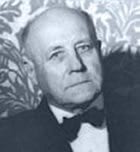With Harry Truman’s approval of directive NSC 10/2, he effectively authorized the CIA to carry out covert actions anywhere in the world, specifically including “propaganda; economic warfare; preventive direct action, including sabotage, anti-sabotage, demolition, and evacuation measures; subversion against hostile states, including assistance to underground resistance movements, guerrillas and refugee liberation groups, and support of indigenous anti-Communist elements in threatened countries of the free world.” By 1951, according to Walter Bedell Smith, the CIA covert operations had already “far exceeded” this.
 The National Security Act of 1947 did not explicitly authorize the CIA to conduct covert operations, although Section 102(d)(5) was sufficiently vague to permit abuse. At the very first meetings of the NSC in late 1947, the perceived necessity to “stem the flow of communism” in Western Europe—particularly Italy—by overt and covert “psychological warfare” forced the issue. NSC 4-A provided the authorization for the intervention of the CIA in the Italian elections of April 1948, and the CIA has been running coups, election fraud, and assassinations all over the world (more freely) since.
The National Security Act of 1947 did not explicitly authorize the CIA to conduct covert operations, although Section 102(d)(5) was sufficiently vague to permit abuse. At the very first meetings of the NSC in late 1947, the perceived necessity to “stem the flow of communism” in Western Europe—particularly Italy—by overt and covert “psychological warfare” forced the issue. NSC 4-A provided the authorization for the intervention of the CIA in the Italian elections of April 1948, and the CIA has been running coups, election fraud, and assassinations all over the world (more freely) since.
Peter Dale Scott writes:
“The immediate concern of the United States was Europe, where it appeared that the French and Italian communist parties might be elected to power in 1948. From the beginning of the postwar era, Washington looked for assets and proxy armies of its own to combat the threat perceived from the Soviet Union and China. Some of these proxies like the the nationalist Chinese Kuomintang (KMT) troops in Burma or the Mafia’s in Italy and Marseilles soon outgrew their US support to become de facto regional players or parastates, exhibiting some but not all of the properties of states in their own right. From 1945-1947, elements in the US army conspired to maintain contacts with former German anti-communists in Europe and their German army commander, General Reinhard Gehlen. 5 men were involved of whom 3 (William J. Donovan, Allen Dulles and Frank Wisner) were representatives of the Wall St. overworld and also of the New York Social Register which listed the members of New York high society. They were awaiting a new agency to succeed Donovan’s Office of Strategic Services (OSS) and take over the Nazi’s ethnic armies in Eastern Europe. But the idea of a centralized intelligence agency encountered fierce competitive opposition from the FBI’s J. Edgar Hoover who was backed at first by elements of Army intelligence. Although it took 2 years to overcome their opponents, the Wall Street lawyers and bankers in Truman’s administration succeeded in 1947 in establishing CIA, which would report to the president through the new National Security Council (NSC). This new agency, based on the precedent and personnel of the OSS had been urged on Washington by the War/Peace studies of the Council of Foreign Relations in the early 1940s. It was reinforced by a report commissioned in 1945 by Navy Secretary James V. Forrestal. The report was written by Ferdinand Eberstadt who like Forrestal was a private Wall Street banker from the investment bank, Dylan Reed. As CIA director Richard Helms narrates in his memoirs Allen Dulles, then a Republican lawyer in Sullivan and Cromwell in New York was recruited in 1946 to draft proposals for the shape and direction what was to become the new CIA. in 1947 Dulles promptly formed an advisory group of 6 men, all but one of whom were Wall St investment bankers or lawyers.”




